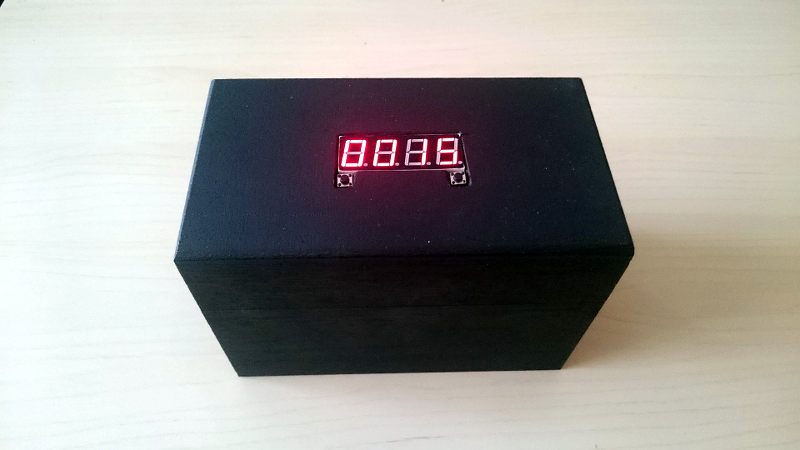Smart phones are great. So great that you may find yourself distracted from working, eating, conversing with other human beings in person, or even sleeping. [Digitaljunky] has this problem (not surprising, really, considering his name) so he built an anti-procrastination box. The box is big enough to hold a smart phone and has an Arduino-based time lock.
The real trick is making the box so that the Arduino can lock and unlock it with a solenoid. [Digitaljunky] doesn’t have a 3D printer, so he used Fimo clay to mold a custom latch piece. A digital display, a FET to drive the solenoid, and a handful of common components round out the design.
The software uses C++ classes to keep everything organized. You can download the code on Github. Usage is simple (see the video below). Lock your phone away and get some work done while you wait for the Arduino to unlock the box.
We thought the use of clay instead of the customary 3D printed part makes it easier to duplicate the project. Of course, you could 3D print a piece, and if you really want to blend both worlds, you can always 3D print in clay. Of course, if you wanted a simpler solution, you could just write locking software for the phone. The box, on the other hand, could lock up anything tempting, not just a phone.

















What happens when the batteries die? Break the lock mechanism?
I’ve seen quite a number of battery powered safes of the more traditional type. There are two solutions I’ve seen for this problem. One of them is to have the battery pack accessible from the outside. This isn’t a security problem, believe it or not, because there’s nothing you can do to the power input that wouldn’t cause it to fail-locked. The other is an auxiliary key lock that bypasses the electronic lock.
Dave from EEVBlog was faced with that exact problem. Here is the video
[youtube=https://www.youtube.com/watch?v=HxQUKAjq-7w]
So… There’s a variation on this that I have contemplated building… As a public service, of sorts… Not for me.
Some folks have a kink of wearing… personal restraints… for extended periods of time. If they have a partner, then the partner can hold onto the keys and be, therefore, in a position of relative power. The details of that I’ll just leave unsaid, mostly because there is such a wide variety of alternatives.
But folks who enjoy that sort of thing who don’t have a partner… well, there’s no reason that they couldn’t place the keys inside of such a unit with slightly different programming… Such a device would have to have the equivalent of a safe word for immediate access, of course, but otherwise would have some sort of heuristics that would have a semi-random chance of granting access, with the randomness influenced by the length of time since the device was locked or the frequency history or what not.
They already have a solution to this(which solves the legal liability nightmare of a programming mistake):
http://www.amazon.com/Mr-S-Leather-Stainless-Steel-Ice-Lock-Large/dp/B003VSRYAC
That’s not quite solving the same problem. I won’t elaborate, as this is a family website.
If I understand correctly, the icelock will unlock after a relatively steady amount of time, and only secures on link, right?
So I’m guessing you have a problem where you don’t necessarily want that same time each time, or you might want to do a more complicated unlocking procedure where this mechanism is only one part of it?
I can’t think of the other use for this box that wouldn’t be solved by the icelock.
Generally the use case here is for far a longer time period than the melting time of ice. And there’s the pseudo-AI aspect of effectively asking permission and getting a decision made per request.
What if the phone rings?
Sound proof the box.
Or just turn it off first.
Get a landline…
Is this the first Holo-addiction ??
Most phone junkies would just rip this thing open.
What if something goes horribly wrong and you need to make an emergency call?
Then life gets credit.
How would clay make this easier to duplicate than a plastic 3d printer?? They’re both 3d printers. But you have to build a clay printer and the latter you can just buy in a shop. Strange.
I only mentioned clay 3D printing in passing. He didn’t have a 3D printer so he used clay like people have been using it for a few thousand years: he formed it by hand. The original human-powered 3D printer maybe ;-)
ok i missed that he used clay. I would probably have probably used whatever box shaped item they have at my local “items cheaper than a cup of coffee shop”, such as a lunchbox, one of my favourite items.
Nice idea! It looks like the solenoid has to remain powered the entire time the box is closed, though, which will drain batteries quickly; a servo might be a better bet here? A simplified UI with a standardised lock time seems like a practical option, too.
also get rid of the 7805, even without the coil this thing won’t last a day on those 4 AA’s.
I suspect the use case here is far shorter than a day. And there’s no reason in principle it has to be battery powered.
LCD v. LED